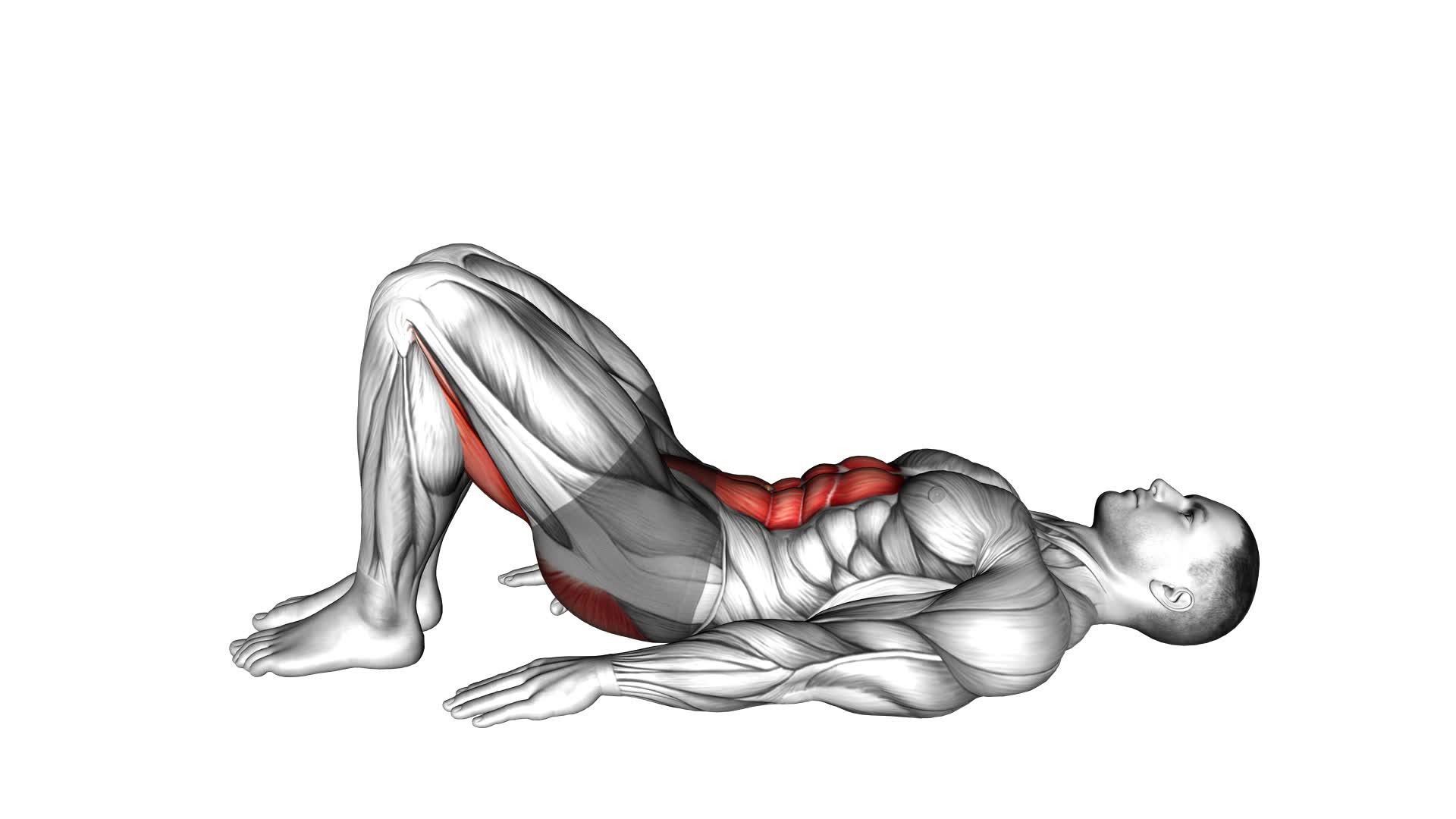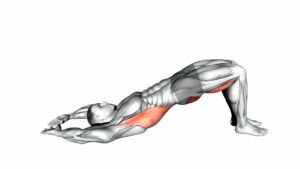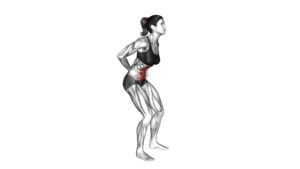Pelvic Tilt – Video Exercise Guide & Tips

Are you looking to improve your core strength and posture? Look no further! In this comprehensive guide, we will walk you through the benefits of pelvic tilt exercises, the proper technique to achieve maximum results, common mistakes to avoid, and variations to keep your workouts interesting.
Watch This Exercise Video
Plus, we'll share tips on how to seamlessly incorporate pelvic tilt into your existing fitness routine. Get ready to strengthen those muscles and achieve better alignment with our video exercise guide and expert tips.
Key Takeaways
- Pelvic tilt exercises can improve posture, reduce the risk of poor posture and associated problems, relieve lower back pain, and stabilize the spine.
- Different variations of pelvic tilt exercises target specific muscle groups such as the glutes, hamstrings, hip flexors, lower abdominal muscles, obliques, and outer hip muscles.
- The proper technique for pelvic tilt involves lying on your back with knees bent, pressing your lower back into the floor, holding the position for a few seconds, and gradually releasing the tilt.
- Common mistakes to avoid during pelvic tilt exercises include arching the back too much, rounding the shoulders, holding the breath, neglecting proper form, and failing to consult with a healthcare professional before starting a new exercise program.
Benefits of Pelvic Tilt Exercises
You will experience numerous benefits by incorporating pelvic tilt exercises into your workout routine. One important benefit is improved posture. The pelvic tilt exercise helps to align your pelvis in a neutral position, which in turn promotes proper spinal alignment. When your pelvis is in the correct position, it helps to maintain the natural curves of your spine, reducing the risk of developing poor posture and the associated problems such as neck and shoulder pain.
Another benefit of pelvic tilt exercises is the relief they can provide for lower back pain. By strengthening the muscles in your lower back and core, pelvic tilt exercises help to stabilize the spine and reduce pressure on the lower back. This can alleviate chronic lower back pain and prevent future episodes of pain.
In addition to posture and pain relief benefits, pelvic tilt exercises also help to improve flexibility in the hip and lower back muscles. This increased flexibility can enhance your overall range of motion and make everyday movements easier and more fluid.
Incorporating pelvic tilt exercises into your workout routine is a simple yet effective way to improve your posture, relieve lower back pain, and enhance flexibility. By dedicating just a few minutes each day to these exercises, you can experience these benefits and enjoy a healthier, pain-free lifestyle.
Proper Technique for Pelvic Tilt
To perform the pelvic tilt exercise with proper technique, focus on engaging your core muscles and maintaining a neutral pelvis position. By following these steps, you can ensure that you're getting the most out of this beneficial exercise:
- Lie on your back with your knees bent and feet flat on the floor. Place your arms by your sides.
- Take a deep breath in and as you exhale, gently press your lower back into the floor, tilting your pelvis backward. Imagine flattening your lower back against the floor.
- Hold this position for a few seconds while maintaining a steady breath.
- Slowly release the tilt and return your pelvis to a neutral position.
By performing the pelvic tilt exercise with proper technique, you can experience a variety of benefits. This exercise can help strengthen your core muscles, including your abdominals, lower back, and glutes. It can also improve your posture and stability, reducing the risk of lower back pain.
Additionally, the pelvic tilt can be incorporated into different progressions as you become more comfortable and stronger. You can try lifting one leg off the ground while maintaining the tilt, or even adding some resistance by using an exercise ball or resistance band.
Remember to always listen to your body and consult with a healthcare professional before starting any new exercise program.
Common Mistakes to Avoid
To ensure that you get the most out of the pelvic tilt exercise and avoid common mistakes, it's important to be aware of certain factors.
Proper form is crucial when performing the pelvic tilt, as it ensures that you engage the correct muscles and avoid unnecessary strain. One common mistake to avoid is arching your back too much during the exercise. This can put excessive pressure on your lower back and negate the benefits of the exercise.
Another mistake is rounding your shoulders or hunching forward. This can disrupt the alignment of your spine and prevent you from targeting the correct muscles.
Additionally, it's important to avoid holding your breath while performing the pelvic tilt. Holding your breath can increase tension in your body and make it difficult to perform the exercise correctly. Remember to breathe deeply and naturally throughout the movement.
Variations of Pelvic Tilt Exercises
One way to add variety to your pelvic tilt exercises is by incorporating different variations. These variations not only keep your workout routine interesting, but also target specific muscle groups and offer modifications for different fitness levels.
Here are four variations to consider:
- Bridge Pose: Lie on your back with your knees bent and feet flat on the ground. Lift your hips off the ground, creating a bridge shape with your body. Hold for a few seconds before lowering back down. This variation targets the glutes and hamstrings.
- Leg Lifts: Start in a supine position with your legs extended. Lift one leg off the ground while keeping your pelvis stable. Lower it back down and repeat with the other leg. This variation targets the hip flexors and lower abdominal muscles.
- Side-Lying Tilt: Lie on your side with your legs bent at a 90-degree angle. Keeping your upper body stable, lift your top knee towards the ceiling, tilting your pelvis. Lower it back down and repeat on the other side. This variation targets the obliques and outer hip muscles.
- Ball Roll: Sit on an exercise ball with your feet flat on the ground. Roll your pelvis forward and backward while maintaining balance on the ball. This variation engages the core muscles and improves balance.
By incorporating these variations, you can customize your pelvic tilt exercises to target specific muscle groups and accommodate different fitness levels.
Now, let's discuss some tips for incorporating pelvic tilt into your workout routine.
Tips for Incorporating Pelvic Tilt Into Your Workout Routine
Incorporate pelvic tilt into your workout routine by following these tips.
One way to incorporate pelvic tilt is to include it in your yoga practice. During certain yoga poses, such as cat-cow or bridge pose, you can actively engage your pelvic muscles and perform a pelvic tilt. This not only helps to strengthen your core and pelvic floor muscles but also improves your overall flexibility and stability.
Another tip is to incorporate pelvic tilt exercises into your postpartum recovery routine. Pregnancy and childbirth can weaken the pelvic floor muscles, leading to issues such as urinary incontinence and pelvic organ prolapse. Performing pelvic tilts can help to strengthen these muscles and promote healing after delivery.
When incorporating pelvic tilt into your workout routine, it's important to start with proper form and technique. Lie on your back with your knees bent and feet flat on the floor. Engage your core muscles and tilt your pelvis by pressing your lower back into the floor. Hold for a few seconds and release. Repeat this movement for 10-15 repetitions, gradually increasing the duration as you get stronger.
Remember to listen to your body and only do what feels comfortable. If you experience any pain or discomfort, stop and consult with a healthcare professional.
Frequently Asked Questions
How Long Should I Hold the Pelvic Tilt Position?
When doing pelvic tilt exercises, it's important to hold the position for the right amount of time to maximize the benefits. The length of time you should hold the pelvic tilt position can vary depending on your fitness level and goals.
Generally, it's recommended to hold the position for about 5-10 seconds and repeat for multiple sets. This helps engage your core muscles and improve stability.
Can Pelvic Tilt Exercises Help With Lower Back Pain?
Pelvic tilt exercises can be beneficial for relieving lower back pain. By engaging the muscles in your pelvic area, these exercises help to strengthen your core and improve your posture.
The pelvic tilt can be performed in various variations, such as lying on your back or standing against a wall. These exercises target specific muscles that support your spine and can alleviate tension and discomfort in your lower back.
Are There Any Precautions or Contraindications for Pelvic Tilt Exercises?
Before attempting pelvic tilt exercises, it's important to be aware of the precautions and contraindications.
Precautions include avoiding excessive strain on the lower back and consulting with a healthcare professional if you have any existing conditions.
Contraindications may include certain injuries or medical conditions that could be aggravated by pelvic tilt exercises.
It's crucial to understand these precautions and contraindications to ensure the safety and effectiveness of your exercise routine.
Can I Do Pelvic Tilt Exercises During Pregnancy?
During pregnancy, pelvic tilt exercises can be beneficial for strengthening your pelvic floor muscles and improving posture. They help alleviate lower back pain and prepare your body for labor.
However, it's important to consult with your healthcare provider before starting any exercise program. They can provide personalized guidance and ensure that pelvic tilt exercises are safe for you and your baby.
Remember to listen to your body and modify the exercises as needed to suit your comfort level.
How Often Should I Perform Pelvic Tilt Exercises for Optimal Results?
To achieve optimal results from pelvic tilt exercises, it's important to consider the frequency and duration of your workouts. How often you perform these exercises will depend on your individual needs and goals.
It's generally recommended to include pelvic tilt exercises in your routine at least 2-3 times a week. However, make sure to consult with a healthcare professional or a certified trainer to determine the most suitable frequency and duration for you.
Conclusion
Incorporating pelvic tilt exercises into your workout routine can provide numerous benefits, such as improved core strength and stability, reduced lower back pain, and enhanced posture.
By following the proper technique and avoiding common mistakes, you can maximize the effectiveness of this exercise.
Additionally, experimenting with variations of pelvic tilt exercises can add variety to your routine and target different muscle groups.
Remember to consult with a healthcare professional before starting any new exercise program.

Author
Years ago, the spark of my life’s passion ignited in my mind the moment I stepped into the local gym for the first time. The inaugural bead of perspiration, the initial endeavor, the very first surge of endorphins, and a sense of pride that washed over me post-workout marked the beginning of my deep-seated interest in strength sports, fitness, and sports nutrition. This very curiosity blossomed rapidly into a profound fascination, propelling me to earn a Master’s degree in Physical Education from the Academy of Physical Education in Krakow, followed by a Sports Manager diploma from the Jagiellonian University. My journey of growth led me to gain more specialized qualifications, such as being a certified personal trainer with a focus on sports dietetics, a lifeguard, and an instructor for wellness and corrective gymnastics. Theoretical knowledge paired seamlessly with practical experience, reinforcing my belief that the transformation of individuals under my guidance was also a reflection of my personal growth. This belief holds true even today. Each day, I strive to push the boundaries and explore new realms. These realms gently elevate me to greater heights. The unique combination of passion for my field and the continuous quest for growth fuels my drive to break new ground.







